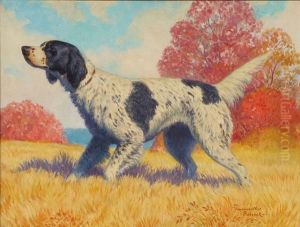Richard Fayerweather Babcock Paintings
Richard Fayerweather Babcock was an American artist known for his contributions to the American art scene during the early to mid-20th century. Born on December 22, 1887, in Beloit, Wisconsin, Babcock grew up in an era that saw significant changes in the art world, with movements such as Impressionism, Post-Impressionism, and the early stages of Modernism beginning to take hold. Despite these evolving artistic trends, Babcock developed a unique style that blended elements of realism and impressionism, focusing primarily on landscapes, still lifes, and portraits.
Babcock studied at the School of the Art Institute of Chicago, where he honed his skills and developed his artistic vision. His education and training at this prestigious institution provided him with a strong foundation in traditional art techniques, while also exposing him to the avant-garde ideas that were beginning to permeate the American and European art scenes. After completing his studies, Babcock embarked on a career that would see him become a respected painter and educator. He spent a significant portion of his career teaching at the Art Institute of Chicago, where he influenced a new generation of artists with his teachings and philosophy on art.
Throughout his career, Babcock's work was exhibited in numerous galleries and museums, and he was a member of several important art organizations, including the Chicago Society of Artists. His paintings, characterized by their vibrant use of color and meticulous attention to detail, captured the beauty and subtlety of the American landscape and the people who inhabited it. Babcock's ability to evoke emotion and atmosphere in his paintings earned him a distinguished place among American painters of his time.
Richard Fayerweather Babcock passed away on June 18, 1954, leaving behind a legacy that continues to be celebrated by art historians and collectors alike. His contributions to American art are remembered for their technical mastery and emotive power, making him an important figure in the transition from traditional to modern artistic expressions in the United States.

